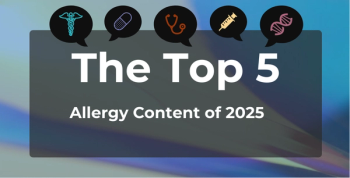
- Patient-Centered Oncology Care 2021
- Volume 27
- Issue 8
In Oncology Clinical Pathways, the Variability Isn’t With the Drugs
Experts who took part in Patient-Centered Oncology Care® 2021 said when guidelines recommend high-cost targeted therapies or immunotherapies, the focus must turn to areas such as imaging, diagnostic tests, and other elements that contribute to the cost of care.
Ann Nguyen, PharmD, was employed by a payer when oncology clinical pathways first came on the scene about a decade ago, and she vividly recalls the reactions:
Why are you doing this? What are you creating? You're taking away physician choices.
“I have a bunch of scars,” Nguyen told the audience during the final panel discussion of Patient-Centered Oncology Care®, the multistakeholder meeting presented September 23-24, 2021, by The American Journal of Managed Care®.
“There was a lot of resistance” from physicians and other stakeholders—enough that her organization was called to appear before the state legislature to explain what pathways were.
“It was very intimidating,” said Nguyen, now vice president of Enterprise Pharmacy for the OptumCare/UnitedHealth Group. Thus came the process of taking feedback, which required meeting with focus groups from oncology practices large and small. And slowly, pathways gained not just acceptance but an embrace, and both academic centers and large community oncology networks developed their own pathways, often built on the framework of a commercial product.
Tracing this evolution was Nguyen; event co-chair and moderator Kashyap Patel, MD, the CEO of Carolina Blood and Cancer Care Associates, as well as the current president of the Community Oncology Alliance; and the following panelists:
• KERIN ADELSON, MD, associate professor, chief qualify officer, and deputy chief medical officer at Smilow Cancer Hospital, Yale Cancer Center;
• LEE S. SCHWARTZBERG, MD, chief medical officer, OneOncology, and professor of medicine, University of Tennessee Health Science Center;
• JOSHUA HOWELL, PharmD, BCOP, vice president, Pharmacy and Clinical Programs, The US Oncology Network, McKesson; and
• DAVID M. JACKMAN, MD, medical director, Clinical Pathways, Dana-Farber Cancer Institute, and assistant professor of medicine, Harvard Medical School.
As Nguyen recalled, The US Oncology Network was a pioneer in the pathways movement, but there was distrust when payers made their foray into the space. There were fears that the motive was purely cost savings—that payers might pick the cheapest drug even if it’s not what the doctor would pick first.
But Adelson said today’s clinical guidelines often recommend a high-cost targeted therapy or immunotherapy because it off ers the best efficacy and lowest toxicity. Thus, relying on pathways to close the variability gap may miss the point.
The focus, Adelson declared, must turn to areas such as imaging, diagnostic tests, and other elements that contribute to the cost of care. “There really is a need now for pathways to encompass the disease trajectory from screening and diagnosis all the way through survivorship and end-of-life care, and to target the multidisciplinary aspects of how we manage cancer, because it’s those other areas outside of the systemic therapy pathways where we see so much variability today.”
Schwartzberg said clinical pathways are a comprehensive decision-making tool that gives a busy physician an immediate way to access the best choices for patients—and there may be more than 1 choice.
“We do like to have preferred arrangements based on what the clinical evidence is, which is changing very quickly,” Schwartzberg noted. However, the desire for having these reference points is balanced by the fact that physicians have no desire to add more “clicks” to their day—the concept is to create an effi cient system that gives physicians the options quickly.
Schwartzberg agreed with Adelson that pathways may spot the outliers, but by themselves, pathways will not drive down drug spending. Integrating pathways into a data system where they can be used to monitor a patient’s hospitalizations or emergency department visits may ultimately save money.
Savings vs Support
Pathways have gained acceptance, the panelists agreed, because oncologists ultimately found them helpful. For example, Adelson said, oncologist in the community who see many diff erent types of cancers felt more confident that they were not selecting the wrong therapy. Howell said processes that build pathways with decision leaders from The US Oncology Network help with buy-in.
“Physicians are part of that,” explained Adelson. “They go into the evidence, and then we roll that out to the practices, [which] really helps with the engagement.”
But do pathways exist primarily to achieve savings or to ensure that patients are receiving evidence-based care?
Patel recalled an early payer-funded product that generated a lot of skepticism from oncologists. By contrast, at Dana-Farber, Jackman leads pathways development driven by physicians. Schwartzberg sees the evolution of one of the pathways processing maturing.
Said Jackman, “As a practicing physician, I can only say that pathways first and foremost have to be [focused on] improving care. Cost needs to be part of the discussion, but if cost is the main point of any system, then we should all pack up our tents.…“We have to always be striving [to improve] the patient experience,” Jackman continued. “First and foremost, how do I improve care for the patient in front of me? And then writ large, I want to think about improving care across a population. Yes, cost has to be part of this. I think we’re silly if we’re writing off cost, but it can’t be the primary focus of anything that we do. It has to be 1 element of a larger system.”
“That’s a great question,” Schwartzberg said. “I think we’d all agree that the value of pathways is [in their potential] to improve care. First and foremost, that’s what we’re trying to do here, at least from the perspective of patient-centered oncology care. So, can you do both?”
Schwartzberg said that 2 points are most relevant: What constitutes a quality pathway? And how do pathways deal with frequent changes in approvals changes to clinical guidelines, such as those from the National Comprehensive Cancer Network (NCCN)?
Payers, panelists agreed, must recognize that practices cannot be expected to juggle multiple pathways—nor to give patients diff erent care based on insurance. At Yale, Adelson said, a clear decision has been made that physicians will not do that: The cancer center’s pathway is followed and all patients receive the same care. Schwartzberg said that OneOncology’s pathways are based on NCCN, but pathways updates can happen more slowly than guideline updates.
Ultimately, Adelson said, she sees pathways evolving into shared decision-making tools—and she is doing research on this.
“You’ll have clinical decision support facing the physician—it functions like a pathway or a guideline, but the patient will make the ultimate decision about the treatment they want,” Adelson said. “And the pathway on the patient-facing side is an educational tool where they can learn things about [adverse] effects, toxicity, efficacy, treatment burden.…I think that that is what the ideal pathway would be—it would incorporate the patient perspective and give the patient a little bit of control in those decisions.”
Articles in this issue
about 4 years ago
Precision Medicine Can Close Oncology Gaps—and Lead to “Doing Less”about 4 years ago
Community Oncology Leaders Find Silver Linings in the Pandemicabout 4 years ago
Leveraging Data and AI to Connect the Life Sciences, Health Systemsabout 4 years ago
Panel Discusses the Ongoing Evolution of Remote Patient CareNewsletter
Stay ahead of policy, cost, and value—subscribe to AJMC for expert insights at the intersection of clinical care and health economics.







































